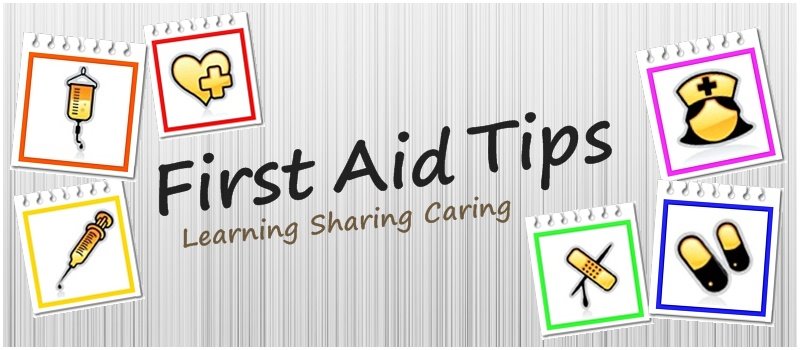Sunday, March 4, 2012
Aim of VAD 57
The members of the Unit VAD 57 will be assisting Health Officer and Security Guard when there is first aid emergency . In addition, the unit will organise FIRST AID TRAINING and also provide FIRST AID DUTIES for events in Curtin Sarawak. Plus this unit will be organising activities that are related to humanity such as community service, training, or even fund raising events to help whoever needs our help.
Tuesday, March 29, 2011
Muscle Cramps
Wednesday, March 23, 2011
Fainting
- Raise the victim legs to speed up recovery by increasing blood flow to the brain.
- Fan the victim.
- Always remember check the patient heart beats rate for in case.
- Put the casualty in recovery position if you are leaving the casualty alone to find help.
- Give a glass of sugar drink after the victims awake.
Sunday, October 4, 2009
Ref. 4 - Chemical Poison In Lab
Every the first time we attend the experimental lab especially chemistry lab, lab instructor always briefs us about the lab rules and emergency safety equipments. Every lab users should always obey the rules for safety purpose.
Accidentally during the experiment, you get:-
First Aid Treatment:
Poison on the Skin
1. Remove contaminated clothing.
2. Avoid contact with the chemical again.
3. Wash the skin with cool running tap water for 15-20 minutes.
4. If your whole body gets poison, quickly get to the Laboratory Emergency Shower (available in Curtin lab) and give yourself an emergency shower.
5. Witness should inform instructor quickly.
Poison in the Eye
1. Holds your eyelids open
2. flood the eye with water from a cup, jug or slowly running tap water for 10-20 minutes.
3. Uses laboratory Emergency Eyewash if available.
4. Witness should inform instructor quickly.
Inhaled Poison
1. Get the person to have fresh air as quickly as possible if safe to do so.
*If you could not bear with the smell in the lab, ask permission from instructor to go out to have some fresh air.
Monday, September 21, 2009
Ref. 3 - Nosebleeds or epistaxis
First Aid Treatment:
Important step to treat nosebleeds including elevating the patient's head 45 degrees, avoiding picking up nose upside down to let the blood flow back to nose. Make sure the patient breathe through his month.
After that, firmly compress the sides of the nose together and not let go 10 minutes. Release the compress for a while and repeat the step again until the bleeding stop. Place ice packs or cold towel on the nose to increase effectiveness.
Monitor vital signs and skin color of the patient. If the bleeding does not stop, bring the patient to the doctor.
Eat lots of fruits and vegetables build a stronger resistant to infections.
References:
M. H. Beers, A.J. Fletcher, T V. Jones, R. Porter, J. L. Kaplan. 2003. The Merck Manual of Medical Information 2th home edition. Merck & Co., Inc.
Sunday, August 23, 2009
Ref. 2 - Recovery Postion
Recovery position is the comfort posture and open airway management technique to assist unconscious(still breathing) casualty before leaving him alone to find help or help others.
Below is video of showing how to put casualty in recover position:-
DO NOT do recovery position if spinal or neck injury is indicated, unless you want to drain the vomit from the airway.
Sunday, August 9, 2009
Ref. 1 - Small Cut or Scrape
First Aid Treatment:
1. The first thing is to make sure that your wound is clean. Infection can develop when a wound is contaminated with dirt and bacteria.
2. Run over tap water and little bit of soap or diluted dettol. You don't have to use a lot of friction unless there's a lot of dirt in the wound.
3. Application of agents, such as alcohol, iodine, and hydrogen peroxide are not recommended. These agents can damage tissue and decrease the recover rate.
4. Once it's clean, make sure that the bleeding is stopped. If not, apply direct pressure to the spot by using clean and dry cloth until the bleeding totally stops.
5. Apply right size adhesive bandage on the wound after clean and dry.
6. Actually do not necessarily need to use an antibiotic ointment or antiseptic cream for small wound. Your body does a great job of healing itself.
7. Make sure to change that bandage daily for hygiene purpose.
References:
M. H. Beers, A.J. Fletcher, T V. Jones, R. Porter, J. L. Kaplan. 2003. The Merck Manual of Medical Information 2th home edition. Merck & Co., Inc.


